| |
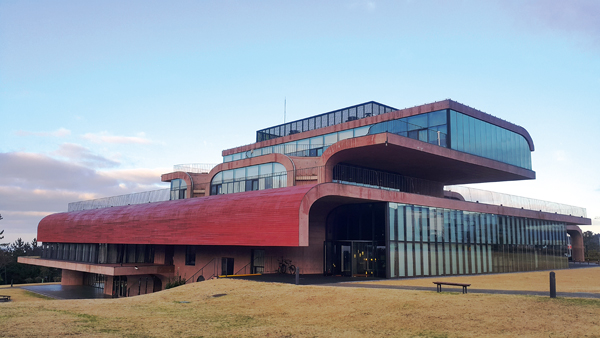 |
|
| ▲ The mighty Kakao Space.1 building Photo courtesy The Jeju Weekly |
This month’s architecture tour sees us visit the work of Minsuk Cho, an award winning Korean architect. He studied at Yonsei University before working in the US and setting up his company, Mass Studies, in Seoul.
He has designed three buildings on Jeju, two of which are situated on the south-east of the island and one of which is located just outside Jeju City.
The first two buildings are found at the O’Sulloc Tea Museum.
This museum is a hugely popular spot amongst travelers in Jeju. They come for the opportunity to take photos amongst the unique scenery found in the tea fields that surround the museum, as well as for the chance to taste some locally produced tea.
The main building was not actually designed by Minsuk Cho. In fact, the buildings he designed were later additions to the site. These are the Tea Stone and Innisfree Jeju House.
The Tea Stone is a two story high tea education center constructed of gray stone and glass. In it, visitors can partake in activities such as learning how to make the perfect cup of tea.
| |
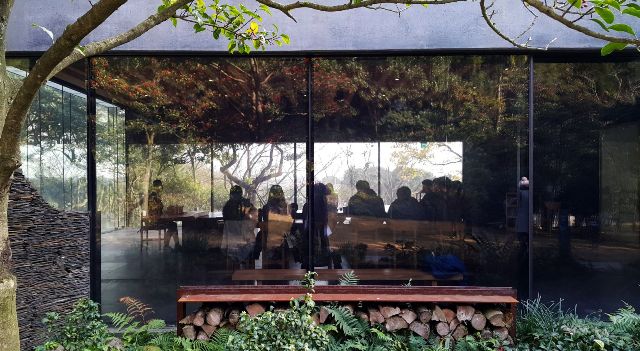 |
|
| ▲ The Tea Stone education center Photo courtesy The Jeju Weekly |
The building is inspired by Kim Jeong-hui. Kim was a politician and scholar during the Joseon period. However, when a new king ascended to the throne, Kim was deemed too powerful and was exiled to Jeju in order to reduce his influence.
However, he was able to make the most of his time on the island. He immersed himself in art and calligraphy. It was during his time in exile that he completed some of his most famed work and he is also credited with inventing the well-known “Chusa” style of calligraphy.
| |
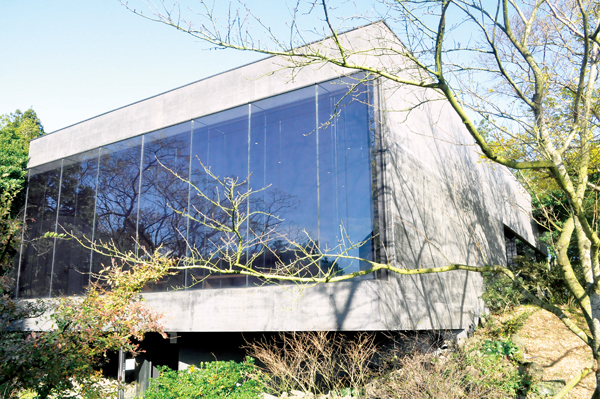 |
|
| ▲ The Tea Stone education center Photo courtesy The Jeju Weekly |
You may be wondering how this all fits into the tea museum and Cho’s architecture?
Well it is said that, like many scholars of the time, Kim Jeong-hui very much enjoyed the subtle warmth provided by green tea while working on his art.
In order to provide inspiration to visitors to the museum, the building takes its name from two of the objects that helped him come up with his masterpieces. Namely “Tea” and “Ink stone”.
The building itself is dark gray (the color of Inkstone).
It has a rectangular shape and on the second floor has wall to wall glass so people can see inside. The fact that the walls are all transparent means that even from inside the building you feel like you are part of the natural world surrounding this place.
The second building in the O’Sulloc Tea museum is the Innisfree Jeju House. It is located next to the Tea Stone and from inside you can get an excellent view of the surrounding tea fields. On a clear day you can even see Mt. Hallasan.
| |
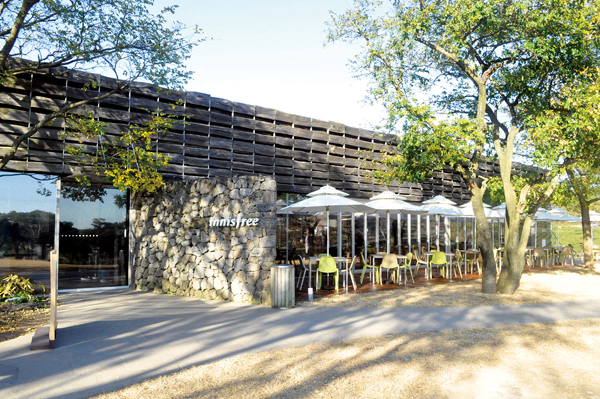 |
|
| ▲ The Innisfree Jeju House Photo courtesy The Jeju Weekly |
Like the Tea Stone building, it was built with a lot of glass which helps open up the space to nature while also keeping the interior well lit, allowing the natural wood used in the design to take center stage.
However, the highlight of the Innisfree Jeju building is the cafe, where you can get a range of sweet treats made from local products, including, of course, green tea.
While the buildings themselves are no doubt impressive, it is the natural surroundings that really bring these two buildings to life. The whole of O’Sulloc is located between an oreum, the lush wilds of Gotjawal Forest, and the clear straight lines of the company’s green tea fields.
The third building designed by Minsuk Cho is the Kakao Space.1 building (formerly Daum Space.1). This is the office of the Korean tech company Kakao and it is situated in the Jeju Science Park.
| |
 |
|
| ▲ The mighty Kakao Space.1 building Photo courtesy The Jeju Weekly |
The Jeju Science Park is a technology campus situated just north of Jeju City, near Jeju National University. The fact that some of Korea’s top companies have offices here means that it has drawn not entirely unjustified comparisons to Silicon Valley.
While not your typical tourist spot, the Kakao Space.1 building still attracts visitors due to its proximity to the city, its unique design as a building, and the photo opportunity provided by the statue of a traditional Jeju stone grandfather using a laptop.
| |
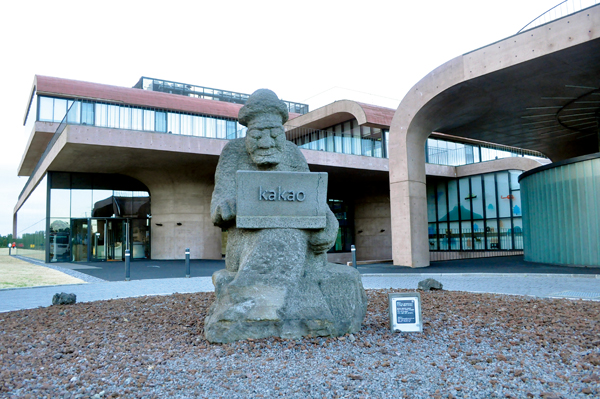 |
|
| ▲ Jeju stone grandfather on his computer outside the Kakao Space.1 building Photo courtesy The Jeju Weekly |
The Kakao Space.1 building is one of the more interesting buildings in the park. In fact, it won the KIRA Korean Architecture Award Grand Prize in 2012.
The building itself takes inspiration from Jeju’s landscape. The inner side features a hidden underground layer which feels like one of Jeju’s volcanic caves, while the building itself is shaped like an oreum.
Like Cho’s other designs, it’s very open, and from certain spots outside you can see pretty much all the way through the structure.
The building has other interesting features too. Most notable is the fact that unlike many office buildings these days, it stretches out horizontally instead of vertically.
Like with the O’Sulloc Tea Museum, the space around the building is very impressive. It is surrounded by fields, and on a clear day the view stretches all the way down past the city and into the deep blue of the ocean.
Here are other architecture tour articles below! |
























